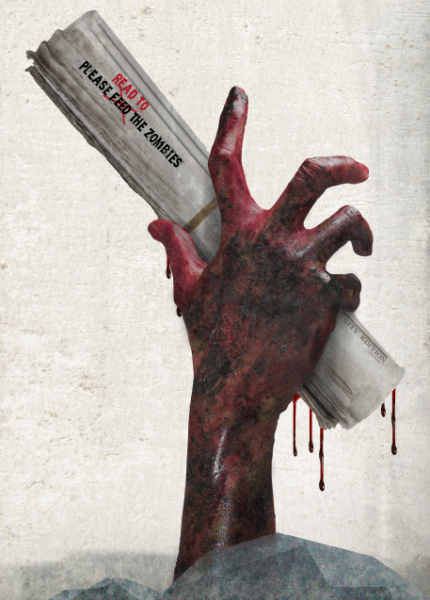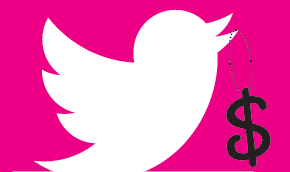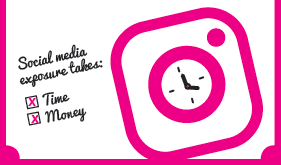December 29th, 2016
Myth: Print is Dead
 There is no doubt the past decade or so has been a little tumultuous for publishers. The rapid proliferation of technology and devices has blazed what seems to be an unstoppable trail for digital media in marketing communications and advertising. With constant news of publishers’ plunging stock prices, layoffs and closings, many are quick to announce that we’re surely witnessing the death of print.
There is no doubt the past decade or so has been a little tumultuous for publishers. The rapid proliferation of technology and devices has blazed what seems to be an unstoppable trail for digital media in marketing communications and advertising. With constant news of publishers’ plunging stock prices, layoffs and closings, many are quick to announce that we’re surely witnessing the death of print.
All that being said, I’m not quite ready to admit that all nails have been driven into this coffin. Call me old fashioned, but I feel that print will weather the storm brought on by digital, just like radio did with the introduction of the magical picture box that we call television.
One shift that I’ve noticed that I find particularly exciting is that marketers and publishers are looking to differentiate by producing a premium product. Imagine magazines and mailers evolving to something beautiful and tactile that feels less like bird cage liner and more like a coffee table book purchased at a local art gallery. One example of this is a clothing catalog that I just received in the mail a few weeks ago. Gone are the flimsy pages of cheap rag paper and pricing info on their products. Instead, I’m treated with a perfect bound book made of heavyweight paper featuring stories that embody the company’s brand. No pricing info can be found. That’s not the purpose of this book. This book was made to infiltrate homes and stay there as long as possible, gently nudging me to a website with full product details and pricing.
 Print is still a medium that garners trust and helps establish brands with its audience. There seems to be an understanding that printed materials are more involved and costly. In a consumer’s eye, that means that the content feels more credible. In the digital world, anyone and everyone can have a voice. This oversaturation of digital noise makes print an ideal partner to communicate a brand’s position to your audience.
Print is still a medium that garners trust and helps establish brands with its audience. There seems to be an understanding that printed materials are more involved and costly. In a consumer’s eye, that means that the content feels more credible. In the digital world, anyone and everyone can have a voice. This oversaturation of digital noise makes print an ideal partner to communicate a brand’s position to your audience.
Whether or not you believe the industry will continue on for the next 500 years, as marketers, our ultimate goal is to connect with our audience. We have to determine where they are and how to engage with them. If print is part of that mix, and it gels with your communication goals, then print away.
December 29th, 2016
Myth: Social Media is Free
 While it’s free to set up social accounts, that’s where the free-ness of social media ends. Just having social media accounts doesn’t do you any good. You have to maintain a worthwhile presence that reaches and engages with your audience. And that takes plenty of both time and money. Here’s the nature of the game today:
While it’s free to set up social accounts, that’s where the free-ness of social media ends. Just having social media accounts doesn’t do you any good. You have to maintain a worthwhile presence that reaches and engages with your audience. And that takes plenty of both time and money. Here’s the nature of the game today:
Create Content Worth Reading
Social media is typically used by consumers for personal reasons, so you need to develop good content for your target audience within this mindset. Take the time to learn what people want to read/watch (relevant to your product and service) and make it digestible via the formats and channels they find most useful. And be sure to strike an appropriate balance between reader content and promotional content. Too much self-serving promotional content can trip you up and turn off your audience.
Enter Pay to Play
Facebook, Twitter and Instagram have developed algorithms that limit the exposure of your organic posts from being seen by all of those that like your page or follow you. So for many businesses, organic social media posts are delivering diminishing returns. And just doing more posts doesn’t accomplish much. You have to pay to be seen in this increasingly cluttered environment.
To reach your audiences today, you need to invest money into options like sponsored, boosted or advertised posts. We are seeing growth rates of 40+ percent in social network ad spending in the last three years. And it’s not slowing down. In the months and years to come, we can expect social media companies to look for new ways to monetize their platforms. As this trend accelerates, businesses that only use free methodologies will find it difficult to sustain their audience.
Strategy is Bigger than Budget
Because of the power of social media, social media marketing is the cost of doing business today. So, how much should you spend to be successful? A more important question to ask is how important is it to have a meaningful dialogue with your customers about your business and your brand. Determine your audience, define your strategy and create your plan accordingly. And by the way, you don’t have to be on every platform or on a certain platform just because it’s trendy. Be where your customers are and focus on doing it well.

November 23rd, 2016
Jim Minge
Most marketing strategies these days revolves around content, and if that content isn’t truthful, helpful or compelling, then your audience just won’t connect. Jim digs deep into your brand to write compelling copy that people want to read. And he has plenty of experience doing so as a columnist for the Omaha World-Herald, an editor in chief at The Reader, City Weekly and Shout! magazines, and as a copywriter for Omaha Steaks and Hayneedle.
November 21st, 2016
Oh So Social
An insight into 12 of today’s most popular social media channels. What it is. Who’s using it. And how you can make it work for you.
STATS INSIDE: To compare each of these social media channels equally, we analyzed how many people in each age group use the medium, based on total U.S. population. This way, you can see a genuine total reach into each age group, rather than percentages of online users only, or percentages of demographics within that particular social media channel.


